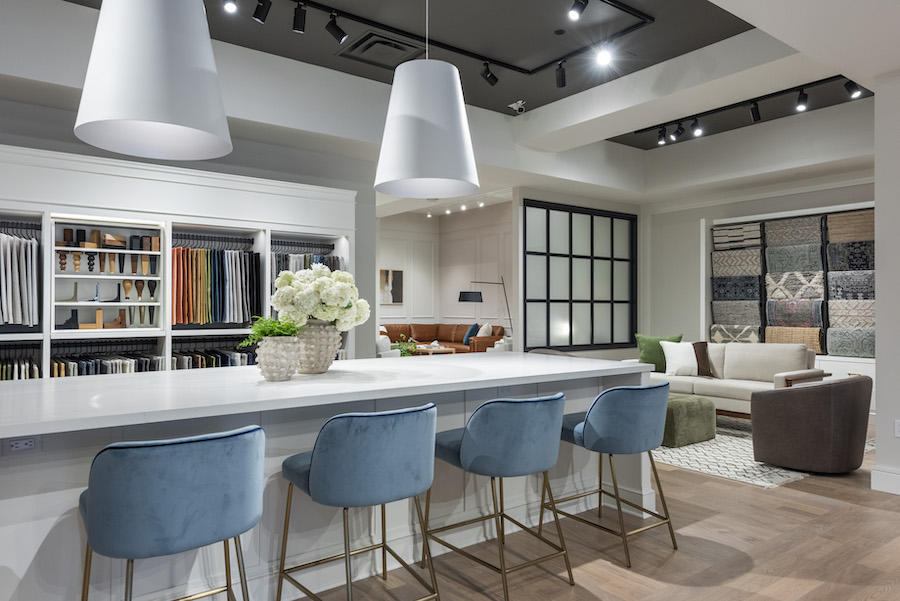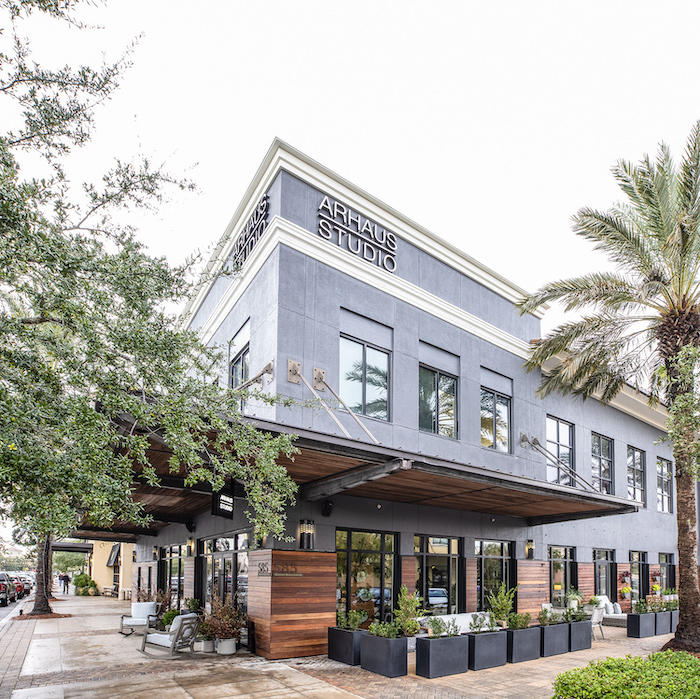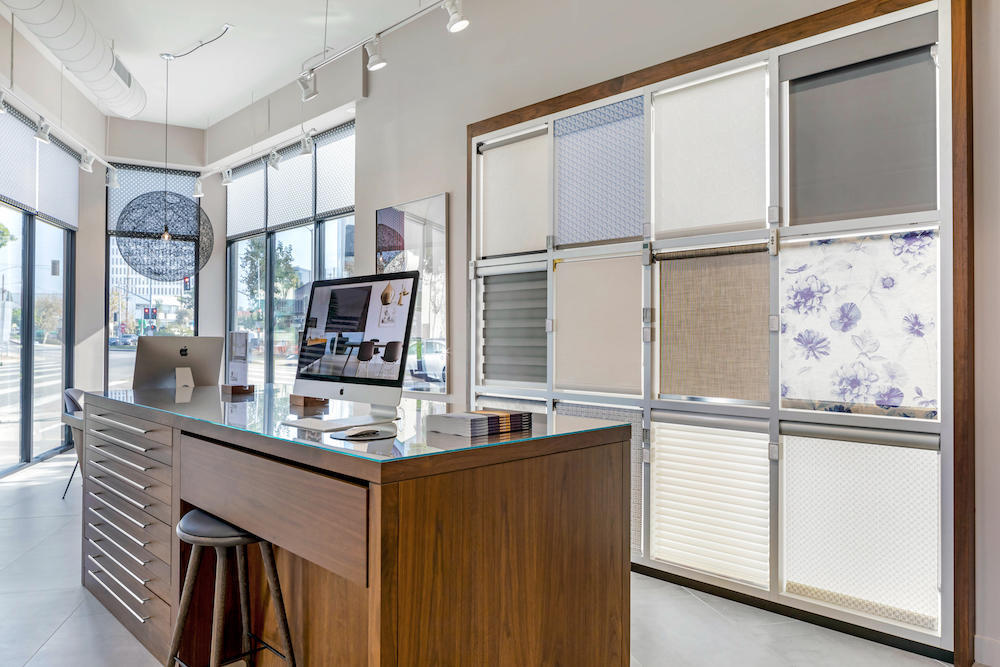If we’ve learned one thing from the COVID era, it’s that you can accomplish a lot online if you have to—especially shopping. The pandemic saw an unprecedented, universal boom in e-commerce, even for historically tricky categories like furniture (Wayfair saw its revenue shoot up 84 percent in one quarter). In an oft-cited study, McKinsey found that e-commerce adoption had advanced 10 years in three months of lockdown. The pandemic was, the story goes, the tipping point that finally shifted the balance of power from physical to digital commerce.
Given that, one would assume that every home brand on earth would be going all in on digital right now, and letting their stores rot. Instead, the opposite has happened. We’re on the brink of a massive period of brick-and-mortar growth for home brands.
A telling, but by no means comprehensive list: Ohio-based home retailer Arhaus, which filed to go public earlier this month, is planning to more than double its brick-and-mortar footprint to 165 showrooms. The Shade Store, already 106 locations strong, plans to keep opening new showrooms at a steady clip of 20 per year. Framebridge has debuted 12 locations in the past 12 months. RH keeps opening new galleries and is expanding to Europe. In perhaps the most ambitious example of retail expansion, Interior Define is planning 30 (yes, 30!) new locations in 2022 alone, tripling its IRL presence.
What’s going on?
WHITE SPACES
Here’s an experiment—try it with a friend or family member who’s not in the industry. First, ask them to name as many brands as they can in fashion. Then, ask them to do the same for home. I tried it with my wife, who named 40 clothing brands before pausing to think. When it came to home, she struggled to get to 10.
Your own results may vary slightly, but the point stands. To industry insiders, it may seem like the market is crowded, but for the average consumer, there simply aren’t a ton of big brand names in home. It’s a classic “white space” situation—a hole in the market that many are eager to fill. “When you look at home, 50 percent of the market is dominated by about 10 big brands. The other half is 25,000 [small operations],” says Jill John, the chief customer officer at Interior Define. “We feel like there’s a lot of market share at play, and [opening stores] is a great way for us to drive brand awareness."
Of course, that hole has been there for decades. What has changed recently is the competition to fill it. RH’s explosive growth has shown that there’s some healthy room between midmarket retail and the design trade. Catalog brands like Lulu and Georgia and Serena & Lily have leapt to prominence, with direct-to-consumer startups like Burrow, The Inside, Whom and many others nipping at their heels. All that activity in the market, coupled with the rocket fuel of the pandemic home boom, have convinced many brands that now is the time to make a big move.
That’s particularly true at the top end of the market, where RH’s dominance has revealed a sizable audience for upscale home retail, and very few players. For many brands making a big push at the moment, tapping into that tier is the goal. (In some cases, the comparison is very direct—when British retailer OKA began opening stores in America earlier this year, senior vice president Krista Stelling told Business of Home that the brand was looking for adjacencies with RH, aiming to provide a more traditional, ornate counterpart to that brand’s somewhat austere look.)
Arhaus is also looking to capture a slice of the upper tier of the market with a blitz of retail expansion. In the company’s SEC filings, it noted a huge untapped market among the kind of affluent consumers who also shop at RH. Arhaus CEO John Reed says RH is certainly a competitor, though his retail strategy is fundamentally different than Gary Friedman’s. (“We’re not looking to get into the hospitality or yacht or jet business,” he tells BOH. “Our focus is on our product ... [and] what we know best, which is furniture.”)

Whatever slice of the market a company is targeting, home brands tend to have a willing audience among retail landlords looking to fill out their portfolio. There are plenty of options in fashion and food, but selling furniture is a niche game. “Anyone who has a center where they want to improve their tenant lineup, there’s not enough choices for great home [offerings],” says Reed. “We have more than enough [shopping center] options.”
“Everybody talks about America being ‘over-stored,’” says Warren Shoulberg, a veteran retail journalist and host of BOH’s Retail Watch podcast. “The problem is that we have too many stores that are the same. A lot of the home retailers making a big push right now have differentiated profiles and retail formats. There’s absolutely room for them in the marketplace.”
BLENDING ONLINE AND OFF
In the 1990s, retail brands began pioneering what was then an innovative strategy to open new stores: They would analyze online orders and traffic to their websites to home in on a brick-and-mortar location. If a lot of people from Detroit were visiting the site and placing orders, the thinking went, let’s open a store in Detroit.
That logic has become part of the retail playbook, but over time, the picture has gotten more complicated. As the price of acquiring customers online has grown exponentially, brands—especially digitally native ones—have grown tired of spending tens (if not hundreds) of thousands of dollars on clicks, and are looking for alternative ways to attract attention. One is opening a store. Now it’s: We want more e-comm sales in Detroit, so let’s open a location there.
Brand after brand will tell you: Opening a retail location has a profound effect on online sales. In its filings with the SEC, Arhaus reported that 80 percent of its online sales came from within a 50-mile radius of a store. John says that Interior Define’s online conversion rate triples when the customer is in a market with a retail location. Retailers once used e-commerce to figure out where to set up a store; now they use a store to—at least partially—build brand awareness and enhance their e-commerce sales.

“[Arhaus has] been a relatively quiet company, and we haven’t over-marketed,” says Reed. “As we go into new markets, we’re not known that well. When we [open a store in] a market where we might not have had a big e-commerce business, we see it grow tremendously. … [For example], we’re not in Seattle, and our e-comm business isn’t as healthy as it is in San Diego, where we do have a store.”
The reframing of a physical store as not just a profit center but a marketing engine has interesting consequences. “The stores become lead generators; they’re essentially billboards that are driving awareness. … One of the attributes we look at in locations is the ability to put some prominent signage on the front,” says John. “For some of our older spaces, that wasn’t something we fought for; [for example] in our SoHo store, we have a small blade sign. It makes a big difference when you’re in University Village in Seattle and your signage covers the entire frontage space. Those are marketing dollars well spent for us.”
AN EXPERIMENTAL ERA
Home retail historically has been somewhat at the mercy of macro forces. When department stores reigned, furniture brands had to find a way to fit in. When malls took over America, home stores squeezed in there, too. The present moment offers a lot more freedom and flexibility—we’re in something of a postmodern era for home retail, when brands can succeed with wildly different approaches.
There’s RH, which uses prestige brick-and-mortar locations to stake out an aggressive brand position. For Friedman, it’s go big or go home, with 90,000-square-foot galleries in architecturally significant locations, tricked out with restaurants and wine bars. An RH location conveys an impact that extends beyond its four walls—it would be wrong to judge these galleries on foot traffic alone.
That works. But so does the “swarm of bees” approach—opening a big number of small stores—adopted by brands like The Shade Store. The company, originally intended to be a digital-only resource, began experimenting with a retail location in 2008. It was like lightning in a bottle, says chief customer officer Zach Gibbs. “We were like, ‘Holy smokes! This is was what was missing!” he says. “After that, there was no doubt about retail ever—this is what we need.”
Since then, the company has been on an aggressive expansion path, now opening two or three stores a month (it’s a regular feature of interviews with Gibbs; every time we speak, The Shade Store has just opened a new location earlier that day). Instead of massive outlets, these are extremely compact studios—typically, around 1,000 square feet. The goal is not to stock each location with massive inventory, but to succinctly display the selection and let a salesperson bring it to life.

The strategy helps The Shade Store saturate large metro areas. With tiny, inexpensive locations, you don’t have to make difficult choices about which affluent neighborhood you want to target. The locations become profitable quickly, says Gibbs, and the company’s internal data suggests there’s plenty more room to grow. The Shade Store has 106 locations at the moment, and according to Gibbs, it could keep going “into the multiple hundreds.”
The Shade Store’s selection lends itself to a compact footprint. But technological advancements have let other brands try out small studio concepts as well. Arhaus has been playing with a new store model that hovers around 3,000 or 4,000 square feet, where a specially trained sales staff walks customers through options aided by visualization technology (they’re not alone—Ethan Allen and Ikea, among others, have pursued the studio model in recent years). Reed says the company is beta-testing these locations, in addition to its more standard locations, which are 15,000 to 18,000 square feet.
Interior Define, meanwhile, found its goldilocks zone by going bigger instead. The company started with slightly smaller, studiolike locations (which it called “Guide Shops”), but eventually found that a larger footprint was more capable of demonstrating the customization capabilities that are the brand’s differentiating factor—it calls the new prototype “Interior Define Studios.”
“Going from an average of 2,000 square feet to 5,000 square feet allows us to show 75 to 80 percent of our assortment, and if we can show [customers] the breadth of our assortment, that drives engagement,” says John. “[We also have room for] a customization area where we show fabric and leg options and a cushion fill assortment. … We’ve tested it enough to know, this is what works.”
IN WITH THE OLD
The point is not so much that any one of these strategies works better than another. It’s that the current landscape can accommodate a lot of variety. As landlords navigate the twin disruptions of COVID and e-commerce growth, many are looking to cut deals and make accommodations. To be sure, there are exceptions—Reed told me at prime retail centers, rents have not decreased radically, and there can still be a wait to get in. (In one extreme instance, Arhaus spent a decade waiting to get into a center in Short Hills, New Jersey.) But for the most part, retailers say it’s a good time to try new things and expand. Flush with cash from pandemic-era sales, in a strong position to negotiate with landlords, home brands are feeling bold and bullish on retail.
For longtime retail proponents, many of whom have spent the past decade watching with some skepticism as direct-to-consumer brands crowed about disrupting the market with an online-only model, this moment likely offers some long-delayed vindication. For the first time in four years, retailers are opening more stores than closing them—and most of the big D2C players now have either a physical location of some kind or a distribution deal with a “traditional” retailer. Even Wayfair is now looking to open a handful of brick-and-mortar locations.
“All kinds of retailers have realized that they need stores—they’re an important part of the mix,” says Shoulberg. “Whether you’re coming from the digital side or physical store side, you need them. Stores work.”
Homepage photo: A vignette from the Arhaus store in Miramar Beach, Florida | Courtesy of Arhaus



























